#8 social media digital marketing strategies
Explore tagged Tumblr posts
Text
200 Social Media Marketing Tactics
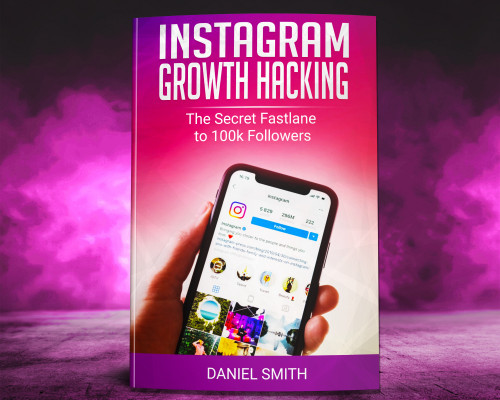
#200 social media marketing tactics#marketing tactics social media#a social media marketing plan#social media marketing a strategic approach 2nd edition pdf#b2b social media strategy example#b2c social media strategy#social media tactics for marketing#social media marketing tactics#8 social media digital marketing strategies#effective social media marketing strategies#media tactics example#effective social media marketing#tactics for social media marketing#tactics of social media marketing
2 notes
·
View notes
Text
Nicki Minaj and Cardi B Carpool Karaoke
#Nicki #Minaj #Cardi #Carpool #Karaoke 0.38 [Music] 0.38 no 0.38 [Music] 0.38 you know what now you sound like you're 0.38 kind of taking it 0.38 um 0.38 well when i do private parties i'd be so 0.38 shy 0.38 like i did a bar mitzvah not so long ago 0.38 and i never performed in front of so 0.38 many kids oh 0.38 and then like my dj he didn't have the 0.38 clean version of the song…

View On WordPress
#$0 marketing#$7 affiliate marketing course#0 dollar marketing#0 investment affiliate marketing#0 investment digital marketing#0 to 1000 affiliate marketing#0 to 10000 affiliate marketing#0nline marketing#1 page marketing plan#1 page marketing plan audiobook#10 log marketing#10 minute school affiliate marketing#10 minute school digital marketing#10 minute school email marketing#12th commerce it digital marketing#12th commerce ocm chapter 8 importance of marketing#12th ocm marketing#15 psychological marketing triggers#2024 affiliate marketing#2024 digital marketing strategy#2024 digital marketing trends#2024 marketing#2024 marketing trends#2024 social media marketing#22 immutable laws of marketing#22 immutable laws of marketing audiobook#2nd puc business studies marketing chapter#2nd sem marketing management#3 cʼs of marketing#3.0 remote marketing agency
0 notes
Text
In Depth: Liberty Media Acquisition
Hello, this post is a response to an ask about what changed in F1 after Liberty Media took over. Great ask, let's dive in.
So in early 2017 the F1 world went through a massive change when it was announced that Liberty Media (LM), an American mass media company, would be taking over. This was an $8 billion acquisition, and they purchased it from Delta Topco, another US company, which was in large part owned by Bernie Ecclestone. The biggest management changes right away were that Ecclestone stepped aside as manager and Chase Carey became the new CEO. Also, Ross Brawn returned to F1 to manage the sporting and technical aspects.
But other than administration, what else changed in F1?
Business Strategy
So, one off the major things LM set out to do was really bring F1 into the digital age. Up until that point F1 had been rather slow to get involved with social media and streaming platforms, but LM knew that modern popularity would stem from there. So they started having a presence on Twitter, Instagram, YouTube, etc. They launched F1TV, a streaming service for all content. They created an app dedicated to news, updates, and tracking standings. All of this helped bring more attention into F1.
Another part of their new strategy was increased fan engagement. Previously the barrier between fan and paddock was much stronger. But LM introduced things like fan festivals, grid-walks, behind-the-scenes content, and other such fan-focused content. They wanted the sport to be extremely accessible to fans, as this is what the younger generation often expects. Nowadays fans can pay to be in the paddock even, or take a tour of a team's garage and see their car's. While the previous management sometimes had special events like this, LM took it to another level.
The final major business strategy that they changed was their sponsorship connections. They renegotiated a lot of the old deals and changed revenue sharing model to get the smaller teams a larger chunk of the sponsorship pie. The goal of this was to make F1 more competitive, as fans tend to not enjoy complete dominance very much. They also connected with some more modern and new sponsors, where previously F1 tended to stick with the old. This allowed them to reach a newer demographic.
Regulations
So, when LM took over they brought with them sweeping regulation changes, but of the major ones started to get introduced only recently in 2021. The biggest of this was the budget cap that was introduced for teams. This limited how much each team could spend per season, also in an efforts to level the playing field. One of the other major changes introduced in 2021 was the car design overhaul. The aerodynamics of an F1 car were changed significantly in order to make overtaking a little easier. As always, this was to make races more exciting.
Beyond those regulations, LM also altered how race weekends worked. They added sprint racing on certain weekend starting 2021, in an effort to make championships tighter and draw more public attention with faster and more eventful races. While the basics of the weekends stayed the same, tighter media scheduling was added in as well and they shifted some race times around to suit a more global audience.
Race Calendar
LM also altered the race calendar when they bought F1. As an American company, it was clear that their major goal was to expand F1 in the US. So US races were brought back, with Miami, Austin, and Vegas being added to the calendar. They also added a lot more races in previously untapped markets like Saudi Arabia and Qatar. While the push was mostly led by a wish for globalization, it also has to do with increasing revenue through hosting fees.
Environmental Concerns
One of the hottest topics in F1 is the environmental concerns that the constant racing creates. This led LM to set a goal to be carbon neutral by 2030. As of right now, they are still working on innovating more sustainable fuel, hybrid engine development, and reducing the sport's overall carbon footprint. This stems from a wish to align F1 with the rising trend of sustainability, making it more attractive to more sponsors and fans.
Audience
Of course you cannot mention the LM changes without mentioning the audience changes. Since 2017, F1 has exploded in popularity. efforts to raise global popularity have worked, and especially in the US F1 is becoming a popular sport. A lot of this stems from their increased presence globally, but a large chunk is from the amount of access LM has given fans. One of those major things was the Netflix docuseries Drive to Survive, which started its first season in 2018. While a bit of a controversial show, it gained an absolutely massive amount of attention, especially among younger American demographics, and led to F1 kind of explode in recent years.The previous demographic for F1 tended to lean more on the older side, to they really opened the doors when they gained this much younger audience.
Alright, so those are the major changes that occurred when Liberty Media took over. At the core F1 is still the same, but this acquisition definitely launched it into the modern age and is responsible for it's current popularity. I hope I answered any questions.
Cheers,
-B
23 notes
·
View notes
Text
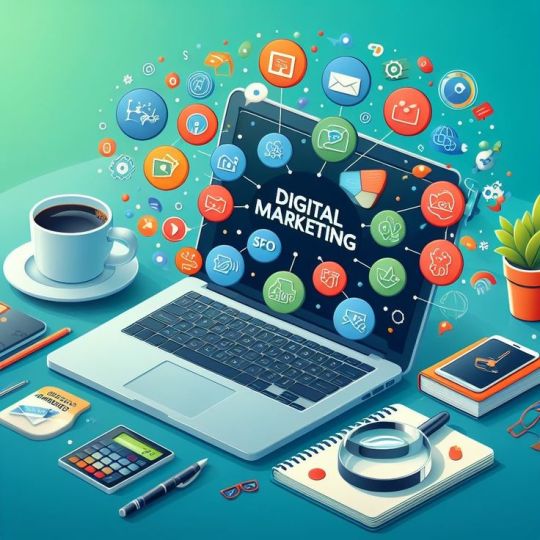
What are the advantages of digital marketing? Digital marketing offers numerous advantages over traditional marketing methods. Some of the key benefits include: 1. Cost-Effectiveness: Digital marketing is often more affordable than traditional marketing channels like TV, radio, and print. Campaigns can be tailored to fit any budget, allowing small businesses to compete with larger companies. 2. Measurability: Digital marketing provides detailed analytics and reporting, enabling marketers to track the performance of their campaigns in real time. Metrics such as click-through rates, conversion rates, and return on investment (ROI) are easily measurable. 3. Targeted Reach: Digital marketing allows precise targeting based on demographics, interests, behavior, and location. Platforms like Google Ads and Facebook Ads enable marketers to reach specific audiences that are more likely to be interested in their products or services. 4. Flexibility and Agility: Digital marketing campaigns can be quickly adjusted based on performance data. Marketers can experiment with different strategies and tactics without significant delays or costs. 5. Global Reach: The Internet provides access to a global audience, enabling businesses to expand their market beyond local or regional boundaries. E-commerce platforms and international shipping options further support global expansion. 6. Enhanced Engagement: Digital marketing channels, such as social media, email, and content marketing, facilitate direct interaction with customers. Two-way communication allows for better customer relationships and improved customer satisfaction. 7. Personalization: Digital marketing tools allow for personalized marketing messages based on user behavior and preferences. Personalization can significantly improve the customer experience and increase conversion rates. 8. Higher Conversion Rates: Digital marketing strategies like search engine optimization (SEO), pay-per-click (PPC) advertising, and social media marketing can drive highly targeted traffic to websites. This targeted traffic is more likely to convert into leads or sales. 9. Better Customer Experience: Digital marketing enables businesses to provide a seamless and integrated customer experience across various online channels. Techniques such as remarketing and automated email responses can enhance the overall customer journey. hashtag#Overall, digital marketing offers a versatile, efficient, and effective way for businesses to reach and engage with their target audience, leading to increased brand awareness, customer loyalty, and revenue growth.
15 notes
·
View notes
Text
Top Organic Social Media Marketing Strategies to Boost Your Audience Without Paid Ads
In today’s competitive digital landscape, growing a social media audience without paid ads is a key goal for many businesses. Organic growth fosters authentic connections, boosts long-term engagement, and builds trust. Below are some essential social media marketing tips to grow your audience organically:
1. Create Share-Worthy Content
To attract attention and encourage sharing, your content must stand out. Highly visual and emotionally engaging content is more likely to be shared, expanding your organic reach.
How to create share-worthy content:
Use eye-catching visuals like infographics, videos, and memes.
Evoke emotions — funny, inspiring, or thought-provoking content performs better.
Offer value by educating or entertaining your audience.
2. Leverage User-Generated Content (UGC)
User-generated content is a powerful way to expand your audience authentically. Encouraging customers to share their experiences builds trust and extends your reach.
How to leverage UGC:
Run contests or giveaways encouraging followers to tag your brand.
Share or repost customer reviews, photos, or testimonials.
3. Optimize Your Profile for Conversions
Your social media marketing strategy should start with optimizing your profile. A well-crafted profile can convert casual visitors into followers.
Profile optimization tips:
Write a clear, keyword-optimized bio.
Include a call-to-action (CTA) and website link.
Use branded visuals for your profile picture and cover photo.
Read More: Social Media Profile Optimization Tips — Learn how to craft a high-converting social media bio.
4. Post Consistently
Consistency is essential for keeping your audience engaged. Platforms reward active accounts with more visibility, so regular posting helps grow your audience.
Steps to maintain consistency:
Use a content calendar to schedule posts.
Experiment with posting times to discover when your audience is most active.
Mix up content types with images, videos, and stories.
5. Engage Directly with Your Audience
Engagement is a cornerstone of effective social media marketing. Directly interacting with followers strengthens relationships and encourages further interaction, boosting visibility.
Ways to increase engagement:
Respond to comments, mentions, and DMs quickly.
Ask questions or start conversations in your posts.
Host polls, surveys, or live Q&A sessions.
You’ll Love: Top Engagement Strategies for Social Media — Proven tactics to increase follower interaction.
6. Use Hashtags Wisely
Hashtags help improve the discoverability of your content. However, the key is using them strategically rather than overloading your posts.
Best practices for hashtags:
Use tools to find relevant, trending hashtags.
Create a branded hashtag for followers to use.
Combine broad and niche hashtags to reach different audience segments.
7. Collaborate with Micro-Influencers
Micro-influencers, with their smaller but highly engaged audiences, are an excellent way to grow organically. Collaborations with them help you tap into their dedicated followers.
How to collaborate with micro-influencers:
Partner for giveaways or joint promotions.
Invite them for a social media takeover.
Co-create content that appeals to both audiences.
8. Cross-Promote on Different Platforms
Don’t limit yourself to one platform. Cross-promotion helps you expand your audience by sharing content across multiple social channels.
Cross-promotion strategies:
Share content on Instagram, Facebook, Twitter, and LinkedIn with tailored messages.
Promote your social channels in blog posts, emails, and YouTube videos.
9. Foster a Community Around Your Brand
Building a community is vital for audience retention. By creating a sense of belonging, you inspire loyalty and encourage followers to spread the word about your brand.
Tips for building a community:
Create private groups on Facebook or LinkedIn.
Host live events, webinars, or virtual meetups.
Be authentic and responsive to your followers.
10. Measure and Adjust Your Strategy
Tracking your performance is essential to improving your social media marketing tips. Use analytics to monitor key metrics and adjust your strategy based on data.
Metrics to track:
Engagement rate (likes, comments, shares).
Follower growth over time.
Content performance to see which formats work best.
By using these social media marketing tips, you can grow your audience without relying on paid ads, while building a strong, loyal community around your brand. @webpinosoftwares
#social media marketing#social media growth#tips for social media marketing#smm#marketing tips#online branding tips#digital marketing#digital marketing services
7 notes
·
View notes
Text
Unlocking Success: The Best Use of Facebook Marketing
In the dynamic landscape of digital marketing, Facebook remains a powerhouse for businesses seeking to connect with their target audience and drive results. With over 2.8 billion monthly active users, Facebook offers an unparalleled platform for businesses to enhance brand visibility, engage with customers, and boost sales. Here's a comprehensive guide on the best use of Facebook marketing to maximize your business potential:

1. Create a Compelling Business Page:
Your Facebook business page is the digital face of your brand. Ensure it's visually appealing, consistent with your brand identity, and includes essential information such as your business hours,

contact details, and a compelling 'About Us' section. Use high-quality images and a captivating cover photo to make a lasting first impression.
2. Leverage Facebook Ads:
Facebook's robust advertising platform allows businesses to target specific demographics, interests, and behaviors. Invest time in creating eye-catching ad creatives, compelling copy, and a clear call-to-action.
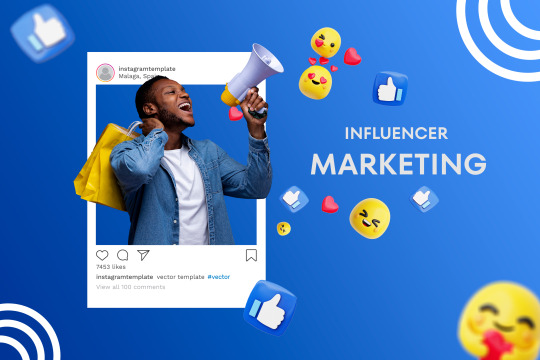
Experiment with different ad formats, such as carousel ads, video ads, and lead ads, to find what resonates best with your audience.
3. Engage with Your Audience:
Social media is all about building relationships. Regularly engage with your audience through comments, messages, and posts. Promptly respond to inquiries, address concerns, and foster a sense of community. Encourage user-generated content by running contests or asking for reviews, turning your audience into brand ambassadors.
4. Utilize Facebook Groups:
Facebook Groups provide a unique opportunity to create a community around your brand or industry. Join relevant groups and participate in discussions, positioning yourself as an authority in your niche. Alternatively, create your own group to foster a sense of belonging among your customers and prospects.
5. Harness the Power of Facebook Analytics:
Facebook Insights offers valuable data on your page performance, audience demographics, and content engagement.

Use these insights to refine your strategy, identify popular content, and optimize your posting schedule. Data-driven decisions are key to a successful Facebook marketing campaign.
6. Optimize for Mobile Users:
A significant portion of Facebook users access the platform on mobile devices. Ensure that your content is mobile-friendly, with concise and visually appealing elements. This includes mobile-optimized ads, responsive landing pages, and a seamless user experience.
7. Implement Facebook Pixel:
Facebook Pixel is a powerful tool that helps you track the actions users take on your website after clicking on your ads. Use this data to measure the effectiveness of your campaigns, retarget website visitors, and optimize for conversions. Facebook Pixel is an invaluable asset for refining your marketing strategy.
8. Run Targeted Contests and Giveaways:
Engage your audience by running contests and giveaways. Encourage participants to like, share, and comment on your posts to increase organic reach. Ensure that the prizes align with your brand and attract your target audience, fostering a positive association with your business.
9. Stay Consistent with Content Strategy:
Consistency is key in maintaining an active and engaged audience. Develop a content calendar and post regularly to keep your audience informed and entertained.

Mix up your content types, including images, videos, articles, and user-generated content, to maintain variety.
10. Test and Iterate:
The digital landscape is ever-evolving, and what works today may not work tomorrow. Continuously test different strategies, analyze results, and iterate based on the feedback and data you receive. This iterative approach will help you stay ahead of the curve and adapt to changing consumer behavior.
#digital marketing#online marketing#seo services#marketing agency#seo expert#seo marketing#best digital marketing agency#facebook marketing#facebook ad agency services#facebook ads#facebook advertising
28 notes
·
View notes
Text
RECENT SEO & MARKETING NEWS FOR ECOMMERCE, AUGUST 2024

Hello, and welcome to my very last Marketing News update here on Tumblr.
After today, these reports will now be found at least twice a week on my Patreon, available to all paid members. See more about this change here on my website blog: https://www.cindylouwho2.com/blog/2024/8/12/a-new-way-to-get-ecommerce-news-and-help-welcome-to-my-patreon-page
Don't worry! I will still be posting some short pieces here on Tumblr (as well as some free pieces on my Patreon, plus longer posts on my website blog). However, the news updates and some other posts will be moving to Patreon permanently.
Please follow me there! https://www.patreon.com/CindyLouWho2
TOP NEWS & ARTICLES
A US court ruled that Google is a monopoly, and has broken antitrust laws. This decision will be appealed, but in the meantime, could affect similar cases against large tech giants.
Did you violate a Facebook policy? Meta is now offering a “training course” in lieu of having the page’s reach limited for Professional Mode users.
Google Ads shown in Canada will have a 2.5% surcharge applied as of October 1, due to new Canadian tax laws.
SEO: GOOGLE & OTHER SEARCH ENGINES
Search Engine Roundtable’s Google report for July is out; we’re still waiting for the next core update.
SOCIAL MEDIA - All Aspects, By Site
Facebook (includes relevant general news from Meta)
Meta’s latest legal development: a $1.4 billion settlement with Texas over facial recognition and privacy.
Instagram
Instagram is highlighting “Views” in its metrics in an attempt to get creators to focus on reach instead of follower numbers.
Pinterest
Pinterest is testing outside ads on the site. The ad auction system would include revenue sharing.
Reddit
Reddit confirmed that anyone who wants to use Reddit posts for AI training and other data collection will need to pay for them, just as Google and OpenAI did.
Second quarter 2024 was great for Reddit, with revenue growth of 54%. Like almost every other platform, they are planning on using AI in their search results, perhaps to summarize content.
Threads
Threads now claims over 200 million active users.
TikTok
TikTok is now adding group chats, which can include up to 32 people.
TikTok is being sued by the US Federal Trade Commission, for allowing children under 13 to sign up and have their data harvested.
Twitter
Twitter seems to be working on the payments option Musk promised last year. Tweets by users in the EU will at least temporarily be pulled from the AI-training for “Grok”, in line with EU law.
CONTENT MARKETING (includes blogging, emails, and strategies)
Email software Mad Mimi is shutting down as of August 30. Owner GoDaddy is hoping to move users to its GoDaddy Digital Marketing setup.
Content ideas for September include National Dog Week.
You can now post on Substack without having an actual newsletter, as the platform tries to become more like a social media site.
As of November, Patreon memberships started in the iOS app will be subject to a 30% surcharge from Apple. Patreon is giving creators the ability to add that charge to the member's bill, or pay it themselves.
ONLINE ADVERTISING (EXCEPT INDIVIDUAL SOCIAL MEDIA AND ECOMMERCE SITES)
Google worked with Meta to break the search engine’s rules on advertising to children through a loophole that showed ads for Instagram to YouTube viewers in the 13-17 year old demographic. Google says they have stopped the campaign, and that “We prohibit ads being personalized to people under-18, period”.
Google’s Performance Max ads now have new tools, including some with AI.
Microsoft’s search and news advertising revenue was up 19% in the second quarter, a very good result for them.
One of the interesting tidbits from the recent Google antitrust decision is that Amazon sells more advertising than either Google or Meta’s slice of retail ads.
BUSINESS & CONSUMER TRENDS, STATS & REPORTS; SOCIOLOGY & PSYCHOLOGY, CUSTOMER SERVICE
More than half of Gen Z claim to have bought items while spending time on social media in the past half year, higher than other generations.
Shopify’s president claimed that Christmas shopping started in July on their millions of sites, with holiday decor and ornament sales doubling, and advent calendar sales going up a whopping 4,463%.
9 notes
·
View notes
Text
Top Digital Marketing Trends to Watch in 2025
Digital marketing has evolved significantly in recent years, making this field even more exciting. In 2025, several key trends will emerge that will not only transform the marketing landscape but also help your content rank higher. Understanding and adopting these trends effectively is essential.
1. The Growing Impact of Artificial Intelligence (AI)
"In 2025, AI-powered marketing will be the biggest trend in the digital world. It will enhance the use of data and provide a superior consumer experience. With AI, companies can understand customer behavior and deliver personalized experiences based on their needs. Visit editpulse.xyz to explore how we can help you leverage AI for your business.

Examples:
Tools like ChatGPT and Jasper make content generation easier.
AI can recommend products based on a customer’s past purchase behavior.
2. Importance of Personalization
"Today's consumers demand personalized experiences. They are drawn to brands that understand their individual needs and preferences.

Key Points:
Email Marketing Personalization: Sending emails based on customer names, past purchase history, and preferences.
Website Personalization: Displaying content tailored to the customer’s preferences after they log in. Visit http://editpulse.xyz/ to learn how we can help personalize your marketing strategy."
3. Rise of Short-Form Video Content
Short-form video content will dominate marketing strategies in 2025. Platforms like TikTok, Instagram Reels, and YouTube Shorts will help brands connect more effectively with their audience.

Examples:
A restaurant promoting its new menu via short videos.
A fashion brand showcasing its new collection on Instagram Reels.
4. Voice Search Optimization
Voice search is becoming a critical component of digital marketing. In 2025, the usage of voice assistants like Alexa, Google Assistant, and Siri will continue to grow. know more click here

Tips:
Make your website voice-search friendly.
Use long-tail keywords that align with voice search queries.
5. Data Privacy and Ethical Marketing

Data privacy will take center stage in 2025. Brands must prioritize transparency and ethical practices in their marketing efforts.
Key Points:
Obtain consent from customers, which will build trust.
Keep data secure and confidential.
6. Growth of Micro-Influencer Marketing
In 2025, micro-influencers (10,000–50,000 followers) will prove to be more effective for brands. They have a dedicated and highly engaged audience.
Examples:
A beauty brand promoting products through micro-influencers.
A fitness brand collaborating with fitness influencers.

7. Expansion of Social Commerce
Social media is no longer just a medium for connection; it has become a platform for shopping. Social commerce will continue to grow in 2025.
Examples:
Customers can use Instagram’s “Shop Now” feature to buy products directly.
Small businesses can sell their products on Facebook Marketplace.

8. Importance of Interactive Content
Interactive content such as quizzes, polls, and live videos will gain popularity in 2025. These formats allow users to engage with brands more effectively.
Examples:
A fitness brand using Instagram polls to gather feedback on new products.
An education platform engaging students through quizzes.

Conclusion
In 2025, leveraging new technologies and strategies in digital marketing will be crucial. To achieve success, adopt these trends and build stronger relationships with your customers. For more information, visit [Your Website Link].
Remember, by prioritizing consumer experiences and embracing innovation, you can take your brand to new heights."
This keeps the flow intact while inserting the link without changing the message. You can replace editpulse.xyz with your actual website URL. http://editpulse.xyz
#seo#digital#digital art#digital illustration#digital drawing#the amazing digital circus#digital marketing#digital media#seo services#india#india seo services#in indias best digital services
3 notes
·
View notes
Text
Digital Marketing Strategy
Set Clear Goals and Objectives: The first step in creating a digital marketing strategy is to define clear goals and objectives. These goals should be specific, measurable, attainable, relevant, and time-bound (SMART). Examples include increasing website traffic, generating leads, improving brand awareness, or driving online sales.
2. Understand Your Target Audience: To effectively reach and engage your target audience, it's important to understand their demographics, interests, behaviors, and pain points. Conduct market research, analyze customer data, and create buyer personas to gain insightful information about your target audience. This will help you tailor your digital marketing efforts to resonate with them.
3. Choose the Right Digital Channels: Identify the digital channels that are most relevant to your target audience and align with your marketing goals. Common digital channels include websites, search engines, social media platforms, email marketing, content marketing, mobile apps, and online advertising. Each channel has unique characteristics and advantages, so choose the ones that best suit your business and audience.
4. Develop Content Strategy: Content is at the heart of digital marketing. Create a content strategy that focuses on delivering value to your target audience. Plan and produce high-quality content that aligns with their interests, needs, and preferences. This can include blog articles, videos, infographics, eBooks, webinars, and social media posts. Consistency and relevance are key to establishing thought leadership and building trust with your audience.
5. Optimize for Search Engines: Implement search engine optimization (SEO) strategies to improve your website's visibility in search engine results. Conduct keyword research to identify relevant search terms and optimize your website's on-page elements, such as meta tags, headings, and content. Create high-quality backlinks from reputable websites to boost your website's authority.
6. Leverage Social Media: Utilize social media platforms to connect with your audience, build brand awareness, and foster engagement. Identify the platforms where your target audience is most active and create compelling content tailored to each platform. Engage in conversations, respond to comments, and encourage user-generated content to cultivate a sense of community and brand loyalty.
7. Implement Email Marketing: Email marketing remains an effective way to nurture leads and engage with existing customers. Develop an email marketing strategy that includes personalized and segmented email campaigns. Provide valuable content, offers, and promotions to your subscribers, and automate email sequences to streamline your communication.
8. Monitor, Measure, and Adjust: Regularly monitor the performance of your digital marketing efforts using analytics tools. Track key performance indicators (KPIs) such as website traffic, conversion rates, engagement metrics, and ROI. Use the insights gained to identify areas for improvement and make data-driven adjustments to optimize your strategy.
9. Stay Updated and Evolve: The digital marketing landscape is constantly evolving. Stay updated with the latest trends, technologies, and industry best practices. Experiment with new channels and tactics to reach your audience. Continuously adapt your strategy based on market changes and feedback from your audience.
10. Evaluate and Refine: Regularly evaluate the effectiveness of your digital marketing strategy against your goals. Identify successes, challenges, and areas of improvement. Refine your strategy based on the insights gained to ensure continuous growth and success.
11. In summary, a well-rounded digital marketing strategy involves setting clear goals, understanding your audience, choosing the right channels, creating valuable content, optimizing for search engines, leveraging social media and email marketing, monitoring and measuring performance, staying updated, and evaluating and refining your approach. By following these steps, businesses can effectively harness the power of digital marketing to achieve their objectives and drive sustainable growth.
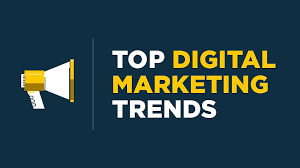
19 notes
·
View notes
Text
Digital marketing
1. Introduction
Define digital marketing.
Briefly explain its importance in today’s tech-driven world.
Use a hook: statistics like "Over 60% of the global population is online!"
2. What is Digital Marketing?
Overview of the concept.
Difference between traditional marketing and digital marketing.
Explain its components (SEO, SEM, Social Media, Content Marketing, etc.).
3. Importance of Digital Marketing
Its role in connecting brands with audiences globally.
Benefits like cost-effectiveness, real-time analytics, and wider reach.
4. Key Components of Digital Marketing
SEO (Search Engine Optimization): The art of ranking higher on search engines.
Content Marketing: Blogs, videos, infographics, etc.
Social Media Marketing: Using platforms like Instagram and Facebook.
Email Marketing: Building personal connections.
Pay-Per-Click Advertising (PPC): Paid strategies for immediate visibility.
5. How Digital Marketing Helps Businesses
Building brand awareness.
Increasing website traffic.
Boosting sales and revenue.
Reaching targeted audiences.
6. Challenges in Digital Marketing
Competition and market saturation.
Keeping up with trends and algorithms.
Creating engaging and authentic content.
7. Future Trends in Digital Marketing (2024 and Beyond)
Growth of AI tools (e.g., chatbots, analytics tools).
Personalization and user experience.
The rise of video content and short-form reels.
Focus on voice search and local SEO.
8. Tips for Beginners
Start with a strong social media presence.
Learn SEO basics and use tools like Google Analytics.
Create quality, user-focused content consistently.
Experiment with small ad campaigns.
9. Conclusion
Summarize why digital marketing is a game-changer.
Call-to-action: “Start your digital marketing journey today with ‘Kirtivishwakarma Digital’!”
3 notes
·
View notes
Text
Mastering B2B Sales: Your Essential Guide to 20 Proven Strategies and Tactics for 2025

The B2B sales landscape is transforming rapidly, driven by advancements in technology, changing buyer behavior, and heightened competition. As businesses gear up for 2025, the focus must shift to a more strategic, data-driven, and customer-centric approach to achieve sustainable growth. Below, we delve into 20 essential strategies and tactics that every B2B company should adopt to refine their sales processes and thrive in the ever-evolving market.
1. Personalized Customer Engagement
In today’s competitive environment, personalization is no longer optional—it’s essential. Tailor your messaging to address specific customer pain points and needs. Use CRM platforms to track interactions, preferences, and behavioral data, ensuring every touchpoint feels meaningful and relevant.
2. Adopt AI and Automation
Artificial intelligence and automation tools are transforming how B2B sales teams operate. From chatbots handling initial inquiries to AI-driven analytics predicting customer needs, these technologies streamline workflows, improve efficiency, and help prioritize leads for better conversion rates.
3. Focus on B2B Lead Generation in India
With India’s growing economy and increasing demand for B2B services, it’s a hotspot for lead generation. Companies like The Global Associates specialize in capturing high-quality leads in this region, enabling businesses to tap into one of the world’s fastest-growing markets. Invest in localized marketing campaigns, and utilize platforms like LinkedIn and Google Ads to target decision-makers effectively.
4. Implement Account-Based Marketing (ABM)
ABM is a powerful strategy where marketing and sales teams work collaboratively to target high-value accounts. Instead of casting a wide net, focus your resources on a select group of prospects, delivering customized campaigns that directly address their specific needs.

5. Enhance Your Digital Presence
Your online presence is often the first impression potential clients have of your business. Ensure your website is optimized for SEO, mobile-friendly, and offers a seamless user experience. Regularly update blogs, whitepapers, and case studies that demonstrate your expertise and add value to your audience.
6. Develop Multi-Channel Outreach
Gone are the days when email alone could drive sales. Today’s B2B buyers expect communication across multiple channels, including email, phone, social media, and even in-person meetings. A well-coordinated outreach strategy ensures you’re reaching prospects wherever they are most active.
7. Invest in Value-Driven Content
Content is the backbone of B2B marketing. Create in-depth whitepapers, blogs, videos, and case studies that address the challenges your prospects face. Use content as a tool to educate and build trust, positioning your business as a thought leader in your industry.
8. Strengthen Sales Enablement
Empower your sales team with the tools, resources, and training they need to succeed. This includes access to up-to-date product information, buyer personas, and data-driven insights that can help them tailor their pitch to individual prospects.
9. Leverage Data Analytics
Incorporate data-driven insights into every stage of your sales funnel. Use analytics tools to track customer behavior, identify trends, and refine your strategies. This approach ensures you’re always making informed decisions that drive results.
10. Collaborate with Strategic Partners
Partnering with complementary businesses can open doors to new opportunities. For instance, a software provider could partner with a consulting firm to offer bundled services, creating value for both companies and their customers.
11. Focus on Customer Retention
It’s often said that retaining a customer is more cost-effective than acquiring a new one. Implement loyalty programs, provide excellent post-sale support, and continuously engage with your existing customers to ensure they remain loyal advocates for your brand.
12. Harness the Power of Video Marketing
Video content is increasingly becoming a preferred medium for B2B buyers. Use explainer videos, product demos, and client testimonials to engage prospects and communicate your value proposition effectively.
13. Encourage Referrals
Happy customers can become your best brand ambassadors. Develop a referral program that incentivizes your existing clients to recommend your services to their network.
14. Monitor Competitors
Keeping a close eye on your competitors can provide valuable insights. Identify what’s working for them and where they might be falling short. Use this information to refine your strategies and gain a competitive edge.

15. Expand Internationally
If your business hasn’t explored international markets yet, 2025 might be the year to do so. Develop localized strategies to address the specific needs and cultural preferences of global audiences.
16. Use Social Proof to Build Credibility
Social proof, such as client testimonials, success stories, and case studies, plays a crucial role in establishing trust. Showcase these prominently on your website and marketing materials to demonstrate your capabilities.
17. Align Sales and Marketing Teams
Silos between sales and marketing teams can hinder your growth. Align their goals and encourage collaboration to create a seamless journey from lead generation to conversion.
18. Host Webinars and Events
Webinars and events are excellent ways to educate your audience, showcase your expertise, and generate new leads. Offer valuable insights during these sessions to leave a lasting impression on your prospects.
19. Optimize Pricing Strategies
Your pricing strategy should cater to different customer segments. Offer tiered packages, volume discounts, or subscription models to accommodate varying budgets and requirements.
20. Partner with Industry Experts
Collaborate with B2B sales and lead generation experts like The Global Associates. With a proven track record of delivering high-quality leads and helping businesses achieve their sales goals, partnering with such firms ensures your strategy is backed by experience and expertise.
Final Thoughts
The future of B2B sales lies in leveraging technology, focusing on customer-centric strategies, and optimizing lead generation efforts in emerging markets like India. By adopting these 20 essential tactics, businesses can stay ahead of the curve, driving both growth and profitability in 2025.
Would you like a tailored approach to integrate these strategies into your business? Collaborate with The Global Associates to unlock the full potential of your B2B sales strategy.
#b2b#b2b lead generation#lead generation#the global associates#b2b lead generation services#lead generation services in india
3 notes
·
View notes
Text
Getting stupidly RICH by going NUCLEAR in Cities Skylines 2!
#stupidly #RICH #NUCLEAR #Cities #Skylines 0.16 hello fellow engineers and welcome back 0.16 to my big city uh it's it's Utopia and 0.16 if you've been watching this series you 0.16 know that last time I built a load of 0.16 geothermal power plants I connected them 0.16 to a massive grid to export all that 0.16 electricity out of the map and now we 0.16 are making some stons I've…

View On WordPress
#$0 marketing#$7 affiliate marketing course#0 dollar marketing#0 investment affiliate marketing#0 investment digital marketing#0 to 1000 affiliate marketing#0 to 10000 affiliate marketing#0nline marketing#1 page marketing plan#1 page marketing plan audiobook#10 log marketing#10 minute school affiliate marketing#10 minute school digital marketing#10 minute school email marketing#12th commerce it digital marketing#12th commerce ocm chapter 8 importance of marketing#12th ocm marketing#15 psychological marketing triggers#2024 affiliate marketing#2024 digital marketing strategy#2024 digital marketing trends#2024 marketing#2024 marketing trends#2024 social media marketing#22 immutable laws of marketing#22 immutable laws of marketing audiobook#2nd puc business studies marketing chapter#2nd sem marketing management#3 cʼs of marketing#3.0 remote marketing agency
0 notes
Text

Starting an e-commerce business can be an exciting venture with immense potential. However, with the opportunities come challenges and uncertainties. Before diving into the world of online retail, it’s crucial to plan carefully and set a solid foundation. Here are some essential tips to consider before launching your e-commerce business:
1. Conduct Market Research
Understanding the market is fundamental to any successful business. Start by identifying your target audience and analyzing competitors. Research trends, customer preferences, and potential gaps in the market. Tools like Google Trends, social media analytics, and industry reports can provide valuable insights. This research will help you tailor your products or services to meet market demands and differentiate yourself from competitors.
2. Define Your Business Model
E-commerce offers various business models, such as B2C (Business to Consumer), B2B (Business to Business), C2C (Consumer to Consumer), and subscription-based models. Determine which model aligns with your goals and resources. Each model has its own set of challenges and requirements, so choose one that best fits your product or service and target market.
3. Create a Solid Business Plan
A comprehensive business plan serves as a roadmap for your e-commerce venture. Outline your business goals, strategies, target audience, marketing plan, financial projections, and operational plan. This document will not only guide your efforts but also help secure funding if needed. A clear plan can keep you focused and organized as you navigate the complexities of launching and running an e-commerce business.
4. Choose the Right E-Commerce Platform
Selecting the right e-commerce platform is crucial for the success of your online store. Popular platforms like Shopify, WooCommerce, Magento, and BigCommerce each offer unique features and capabilities. Consider factors such as ease of use, scalability, customization options, payment gateways, and integration with other tools. The platform should align with your business needs and provide a user-friendly experience for both you and your customers.
5. Develop a User-Friendly Website
Your website is the face of your e-commerce business. Ensure it’s designed to be user-friendly, visually appealing, and optimized for mobile devices. A clean, intuitive layout with easy navigation will enhance the shopping experience and reduce cart abandonment rates. Focus on high-quality images, detailed product descriptions, and a seamless checkout process. Additionally, implement search engine optimization (SEO) strategies to improve your site’s visibility in search engines.
6. Implement Secure Payment Processing
Security is a top priority in e-commerce. Customers need to trust that their payment information is safe. Choose a reputable payment gateway and ensure your website uses SSL certificates to encrypt data. Additionally, offer multiple payment options, including credit/debit cards, digital wallets, and other payment methods that are popular with your target audience.
7. Plan Your Logistics and Supply Chain
Efficient logistics and supply chain management are vital for e-commerce success. Develop a strategy for inventory management, warehousing, and shipping. Decide whether you’ll handle fulfillment in-house or partner with third-party logistics providers. Consider shipping options, delivery times, and costs. A smooth and reliable fulfillment process can significantly impact customer satisfaction and repeat business.
8. Craft a Marketing Strategy
Effective marketing is essential to drive traffic and sales to your e-commerce store. Develop a multi-channel marketing strategy that includes social media, email marketing, content marketing, and paid advertising. Create engaging content, run promotions, and leverage social media platforms to build brand awareness and attract customers. Monitor and analyze the performance of your marketing efforts to refine your strategies over time.
9. Focus on Customer Service
Exceptional customer service can set your e-commerce business apart from competitors. Provide multiple channels for customer support, such as live chat, email, and phone. Ensure timely responses to inquiries and resolve issues promptly. Building strong customer relationships and encouraging feedback can enhance customer loyalty and drive positive reviews.
10. Monitor and Adapt
The e-commerce landscape is constantly evolving. Regularly review your business performance, track key metrics, and gather customer feedback. Stay informed about industry trends and technological advancements. Be prepared to adapt your strategies and operations based on insights and changes in the market.
#ecommerce#marketing#business#digitalmarketing#ecommercebusiness#entrepreneur#onlineshopping#website#seo#webdesign#b#marketingdigital#onlinebusiness#branding#shopify#smallbusiness#socialmediamarketing#webdevelopment#online#amazon#shopping#onlinestore#onlineshop#design#ecommercewebsite#dropshipping
5 notes
·
View notes
Text
"10 Digital Marketing Hacks That Will Boost Your ROI"
10 Digital Marketing Hacks That Will Boost Your ROI
In today’s competitive digital landscape, maximizing your return on investment (ROI) from digital marketing is crucial for business growth. With limited budgets and an overwhelming amount of marketing options, businesses need smart strategies to ensure every dollar spent brings measurable results. Here are 10 digital marketing hacks that can help you boost your ROI and achieve better results from your campaigns.
1. Leverage Data Analytics for Smart Decision-Making

One of the most effective ways to maximize ROI is by making data-driven decisions. Use tools like Google Analytics, social media insights, and email marketing reports to analyze your campaigns and understand what’s working and what’s not. Track key metrics such as conversion rates, click-through rates (CTR), and customer acquisition costs to make informed decisions about where to allocate your resources for the best return.
2. Refine Your Target Audience with Segmentation

Not all customers are the same, so why should your marketing efforts treat them that way? Segment your audience based on factors like demographics, interests, and behavior. This will allow you to send more personalized and relevant messages, which are proven to improve conversion rates. Tailored content and offers lead to higher engagement, translating into better ROI.
3. Optimize Your Website for Conversions

Your website is the heart of your digital marketing efforts, and it must be optimized for conversions. Use A/B testing to test different headlines, layouts, and calls to action (CTAs) to find what drives the best results. A streamlined user experience (UX) and fast loading times are also key to reducing bounce rates and improving your chances of converting visitors into customers.
4. Focus on Quality Content Over Quantity

Creating high-quality content that resonates with your audience is more important than churning out tons of posts. Well-researched, engaging, and informative content tends to perform better on search engines and social media, driving organic traffic. Rather than focusing on sheer volume, invest time in creating content that answers your audience's pain points and showcases your expertise, ensuring higher engagement and ROI.
5. Use Retargeting Ads to Convert Warm Leads

Retargeting ads are a powerful tool to boost conversions and ROI. By showing ads to people who have already interacted with your website or social media profiles, you can stay top of mind and encourage them to complete a purchase. Since these individuals have already shown interest, the chances of conversion are much higher, making retargeting one of the most cost-effective ways to drive revenue.
6. Implement Email Marketing Automation
Email marketing automation can significantly improve your ROI by allowing you to nurture leads more efficiently. Set up automated email sequences that engage your leads based on their actions, such as signing up for a newsletter, downloading an eBook, or abandoning a cart. Personalized follow-ups and targeted promotions increase the likelihood of conversions and can lead to higher customer retention rates.
7. Optimize for Local SEO
Local SEO is a goldmine for businesses that rely on local customers. Make sure your business is listed on Google My Business, and ensure your website is optimized with local keywords. Include your location in title tags, meta descriptions, and content to increase visibility in local search results. Local searchers are more likely to convert into customers, so improving local SEO can significantly boost your ROI.
8. Use Social Proof to Build Trust
People trust other people, so use social proof to boost credibility and drive conversions. Display customer testimonials, reviews, and case studies on your website and social media channels. User-generated content (UGC), such as photos and videos of your products in use, can also build trust and help convert prospects into customers.
9. Capitalize on Influencer Partnerships
Influencer marketing isn’t just for big brands. By collaborating with micro-influencers who have smaller, niche followings, you can reach a highly engaged audience at a fraction of the cost. Influencers can help you promote your products authentically and boost your credibility, which can lead to increased sales and improved ROI.
10. Prioritize Mobile Optimization
With more consumers shopping and browsing on mobile devices, optimizing your website and ads for mobile is essential. Ensure that your website is responsive, loads quickly, and provides a seamless user experience on all devices. Mobile-friendly websites lead to better engagement, higher conversions, and ultimately, improved ROI.
Conclusion
In today’s fast-paced digital world, optimizing your digital marketing strategy is key to achieving a higher ROI. By leveraging data, targeting the right audience, optimizing your website, and utilizing tactics like retargeting, influencer partnerships, and email marketing automation, you can significantly increase your marketing effectiveness and bottom line. By focusing on these digital marketing hacks, businesses of all sizes can see more significant returns on their investments and stay ahead of the competition.
4o mini
2 notes
·
View notes
Text
Driving Business Forward: Harnessing the Potential of Digital Marketing Services
In today's rapidly evolving digital landscape, businesses are continually seeking innovative strategies to enhance their online presence and connect with their target audience effectively. Among these strategies, digital marketing services stand out as indispensable tools for businesses looking to thrive in the digital realm. Let's delve into the myriad benefits that digital marketing services offer and how they can propel businesses towards greater success.

1. Amplified Online Visibility
Digital marketing services play a pivotal role in elevating a business's online visibility across various digital platforms. From search engines to social media networks and websites, these services strategically promote brands, extending their reach and bolstering brand recognition among their target audience.
2. Precision Targeting
One of the primary advantages of digital marketing services lies in their ability to precisely target specific demographics, interests, and behaviors. This targeted approach ensures that marketing efforts reach the most relevant audience segments, resulting in higher engagement rates and increased conversion opportunities.
3. Cost-Effectiveness
Unlike traditional marketing methods such as print ads or television commercials, digital marketing services offer a more cost-effective alternative. By investing in strategies that deliver measurable results and a higher return on investment (ROI), businesses can optimize their marketing budget and allocate resources more efficiently.
4. Measurable Results
Digital marketing services provide businesses with the ability to track and analyze the performance of their campaigns in real-time. Comprehensive analytics tools offer valuable insights into key metrics such as website traffic, click-through rates, and conversion rates, empowering businesses to make data-driven decisions and refine their strategies accordingly.
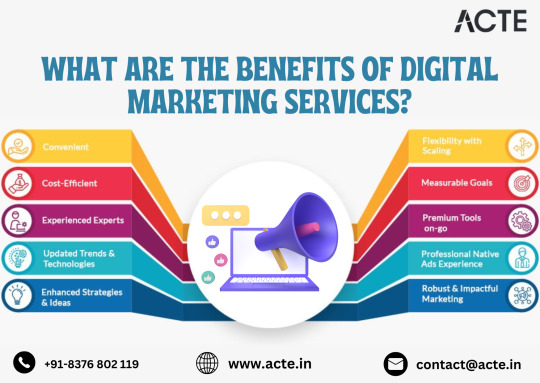
5. Enhanced Customer Engagement
Through various digital channels such as social media interactions, email marketing, and targeted content, businesses can engage with their audience on a more personal level. This fosters stronger relationships with customers, leading to increased brand loyalty and advocacy.
6. Global Reach
Digital marketing services enable businesses to transcend geographical boundaries and expand their reach beyond local markets. By leveraging digital channels, businesses can tap into new markets and connect with potential customers worldwide, irrespective of their location.
7. Improved Customer Experience
Personalization is key in digital marketing, allowing businesses to deliver tailored content based on customer preferences and interests. By providing valuable information and addressing customer needs, businesses can enhance the overall customer experience, fostering trust and credibility.
8. Adaptability and Flexibility
In the dynamic digital landscape, businesses must adapt quickly to changes and trends. Digital marketing services offer flexibility and scalability, allowing businesses to adjust their strategies in response to market dynamics and consumer behavior.
9. Competitive Advantage
By embracing digital marketing strategies, businesses can gain a competitive edge over competitors still reliant on traditional methods. Staying ahead of the curve and leveraging innovative digital tactics can position businesses as industry leaders and innovators.
In summary, digital marketing services offer a multitude of benefits for businesses, from heightened brand visibility and precision targeting to cost-effectiveness and measurable results. By harnessing the power of digital marketing, businesses can effectively engage with their target audience, drive customer engagement, and achieve their marketing objectives in today's digital age.
#tech#training#digital marketing#digital marketing company#digital marketing course#online marketing#search engine optimization#email marketing#seo#seo services
7 notes
·
View notes
Text
Unleashing the Power of Facebook Marketing: Rapid Brand Growth in a Short Time
In the dynamic world of digital marketing, leveraging the potential of social media platforms is paramount for achieving rapid brand growth. Among the myriad options available, Facebook stands out as a powerhouse for marketers.

With its vast user base and robust advertising tools, Facebook provides an unparalleled opportunity to connect with a massive audience and propel your brand to new heights in a short time. Here's a comprehensive guide on the best use of Facebook marketing to achieve rapid brand success:
1. Define Your Objectives:
Clearly outline your marketing objectives, whether it's increasing brand awareness, driving website traffic, or boosting sales.

Having well-defined goals will guide your Facebook marketing strategy and help measure success.
2. Create a Compelling Page:
Craft an engaging and professional Facebook Page that reflects your brand identity. Use high-quality visuals, a captivating cover photo, and a concise yet informative bio. Regularly update your page with relevant content to keep your audience engaged.
3. Leverage Facebook Ads:
Facebook's advertising platform is a game-changer. Invest in well-targeted ads to reach your specific audience.
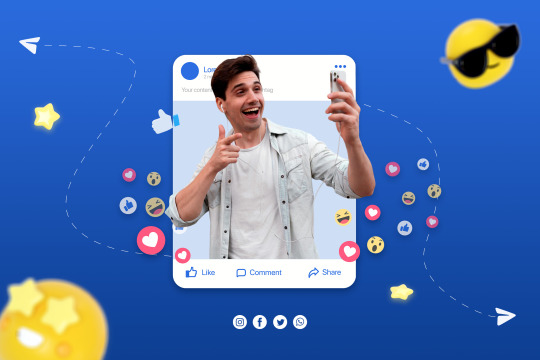
Utilize Facebook's powerful targeting options, including demographics, interests, and behaviors, to ensure your ads are seen by the right people.
4. Engaging Content Strategy:
Develop a content strategy that resonates with your target audience. Create a mix of visually appealing images, engaging videos, and informative posts. Consistency is key – post regularly to maintain a strong online presence.
5. Harness the Power of Video:
Video content is highly engaging on Facebook. Create compelling videos that showcase your products or services.

Share behind-the-scenes glimpses of your brand, and tell stories that connect with your audience emotionally.
6. Run Contests and Giveaways:
Encourage user participation through contests and giveaways. This not only increases engagement but also expands your brand's reach as participants share your content with their networks.
7. Utilize Facebook Groups:
Join or create Facebook Groups relevant to your industry. Engage with group members by providing valuable insights, answering questions, and subtly promoting your brand. Be genuine and build relationships within the community.

8. Responsive Customer Service:
Use Facebook Messenger to offer prompt and personalized customer service. Respond to messages quickly, address customer inquiries, and resolve issues. A positive interaction can turn a customer into a brand advocate.
9. Track and Analyze Performance:
Regularly monitor the performance of your Facebook marketing efforts. Utilize Facebook Insights to track metrics such as reach, engagement, and conversions. Adjust your strategy based on the data to optimize results.
10. Collaborate with Influencers:
Partnering with influencers can significantly amplify your brand's reach. Identify influencers relevant to your niche and collaborate on sponsored content or product reviews to tap into their audience.
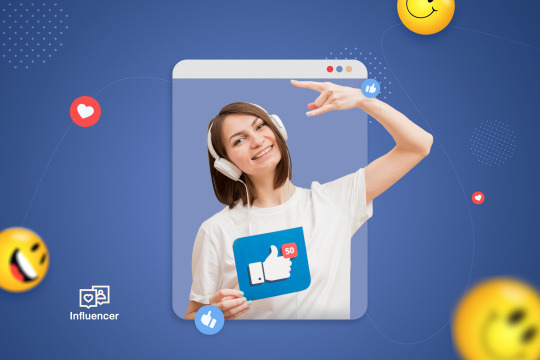
In conclusion, Facebook marketing is a potent tool for achieving rapid brand growth. By strategically implementing these tips, you can create a robust presence, engage with your target audience, and drive tangible results in a short period. Embrace the versatility of Facebook's marketing tools, stay agile in your approach, and watch your brand soar to new heights in the digital landscape.
#digital marketing course#online marketing#digitalmarketing#digital marketing#seo#learn digital marketing#marketing agency#digital marketing service#seo expert#seo marketing#facebook marketing#facebook ads#facebook advertising#facebook ad agency services#facebook post#whatsapp#influencers#social media
12 notes
·
View notes